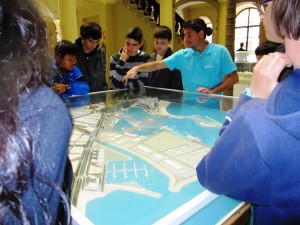Nobody knew exactly when the problems started at a remote village called Denimbur. Young girls started to disappear.
At the beginning, with the first girl, people thought that it was a murder. There was an investigation, but it was impossible to find her. And now, there are six girls who have disappeared.
Every night the people from that village kept safe in their houses. In the dark and cold night they didn’t open the doors or windows because there was a rumour going round that if you went out after the sunset, you wouldn’t return.
So each family would bar their doors and windows, fearing what lurked in the dark. In the night each sound seemed scary, every move of the house could mean that something bad was happening.
Distrust and suspicion possessed the people of Denimbur. Nowhere was fear more palpable than at 99 Raven Crescent.
It was an enormous mansion in the outskirts of the village. Her owner was an old woman who lived with her granddaughter. She was the first girl who dissapeared. SInce the old woman was living alone, she was always scared, and the nights were the worst part…
The old woman from sunset was always alone, closed in an empty house with no light, just a candle in the window for her granddaughter. None saw her walking out after sunset, just on the anniversary of her granddaughetr’s death when she went to the cemetery with a bouquet of red daisies in her hand.
The old woman was accompanied by a little dog, her granddaughter’s dog. As there were no lights, she lost her way. The dog became nervous and started to bark. They came to a cave and listened to a scary sound. They decided to hide there, as they couldn´t see anything outside. The place was as a tunnel.
The next day the people from Denimbur were looking for the old woman. A blind girl was with them, she couldn’t see, but she could hear any sound, so people decided to follow her.
Meanwhile, the little dog was nervous again. There were new sounds outside the cave. The old woman couldn’t move because she was very tired and terrified. As the dog was barking, Lia, the blind girl, could listen to it. The people could reach the place where the cave was. It was a strange place, full of vegetation.
When they were helping the old woman to go out of the cave, they could listen to other sounds coming from the end of that kind of tunnel. At the beginning it was a slight murmur, but Lia listened to it perfectly. All of them paid more attention and could hear the murmurs.
Two brave men decided to enter the cave. It was a great surprise when they discovered the six missing girls. They were ill, but they were alive.
Two years later, the six girls were completely recovered. Everything was normal in their lives. There was only one strange thing: nobody could find the criminal, the person who kidnapped the girls.
Suddenly, one morning my sister wasn´t in her bedroom…
I related her disappearance to the events from two years ago and I decided to look for her in the cave. As I entered this mysterious place, I encountered a terrifying view.
My sister was laying onn the ground without any sign of life. Someone who was wearing dark clothes was speaking very quietly to her. Hopefully, I saw that Kate started to move. She was crying. I woke up from my astonishment.
The dark man didn’t notice me yet, so I got on my knees and started observing the surroundings. Kate was in the middle of the cave and in each corner of it stood a candle.
I hid behind a rock and observed the scene in utter astonishment. The dark figure started walking in a circle around Kate, murmuring an ominous chant.
I was so terrified that I haven’t even noticed the moment I started whispering prayers. Unfortunately, the stranger must have heard that.
He looked at me with unnaturally glowing eyes. Suddenly his chant changed and I became paralyzed by some force.
I couldn’t move and I felt utterly empty. I was getting blind and I saw was my little sister laying down the cave ground. I fell asleep.
When I woke up, my sister wasn’t there. Only the dark man was sitting inside a cave, smoking a cigarette and watching me.
I went up to the man and asked him who he is and what was he doing in the cave. At first he didn’t want to answer but then he told me the whole story.
He started talking about all the horrible things that happened and I was unable to comprehend it. Suddenly, he fell on his back, as I later found out, dead.
I went home. My sister was there, but she couldn’t remember anything. And she could never remember it. We will never know what happened… But was it the end?



